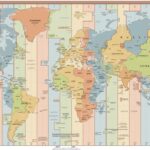How big is Alaska compared to the UK? Understanding the immense size of Alaska in relation to the United Kingdom provides valuable context for appreciating geographical scales and regional differences. This comparison unveils significant contrasts in land area, resources, and environmental factors, all of which can influence economic activities, population distribution, and strategic considerations. At COMPARE.EDU.VN, we help you compare and analyze vast landscapes to make informed decisions. Explore further to discover why size truly matters in this transatlantic comparison.
1. Understanding the Scale: Alaska Versus the UK
Alaska, known for its vast wilderness and stunning natural beauty, often leaves people wondering about its sheer size. Similarly, the United Kingdom, an island nation rich in history and culture, has its own unique geographical footprint. Comparing these two regions unveils striking differences in land area and environmental characteristics. Let’s dive into a detailed exploration to understand the true scale of these two distinct locations.
1.1 Geographical Overview of Alaska
Alaska, the largest state in the United States, spans an impressive 665,384 square miles (1,723,337 square kilometers). This vast territory includes diverse landscapes such as towering mountains, expansive forests, and icy glaciers. Its coastline stretches over 34,000 miles, longer than the entire continental U.S. coastline. The state is divided into several geographical regions, each with unique features and climates. These regions include:
- Arctic Alaska: Characterized by tundra and permafrost.
- Interior Alaska: Dominated by vast forests and river systems.
- Southcentral Alaska: Home to the majority of the state’s population and includes the Chugach Mountains.
- Southeastern Alaska: Known for its temperate rainforests and fjords.
- The Aleutian Islands: A chain of volcanic islands extending westward into the Bering Sea.
Alaska’s geographical diversity supports a wide range of ecosystems and plays a crucial role in its economy, particularly in industries like fishing, oil, and tourism.
1.2 Geographical Overview of the UK
The United Kingdom, a sovereign island nation, comprises England, Scotland, Wales, and Northern Ireland. Its total land area is approximately 93,628 square miles (242,514 square kilometers). The UK’s landscape is varied, with rolling hills, rugged coastlines, and urban centers. Each country within the UK has its own distinct geographical features:
- England: Characterized by lowlands and rolling hills, with the Pennines forming a spine in the north.
- Scotland: Features rugged highlands, including the famous Scottish Highlands, and numerous islands.
- Wales: Known for its mountainous terrain, particularly Snowdonia in the north.
- Northern Ireland: Comprises rolling hills, fertile lowlands, and a coastline dotted with cliffs and beaches.
Despite its relatively small size compared to Alaska, the UK boasts a densely populated and highly developed landscape. Its strategic location has historically made it a significant player in global trade and geopolitics.
1.3 Size Comparison: Visualizing the Difference
To truly grasp the size difference between Alaska and the UK, consider the following:
- Alaska is roughly 7.1 times larger than the UK.
- You could fit the entire UK into Alaska more than seven times over.
- Alaska’s land area is almost equivalent to the combined area of France, Germany, and Spain.
The immense size of Alaska provides vast open spaces, abundant natural resources, and unique environmental challenges. In contrast, the UK’s smaller size contributes to its higher population density and intensive land use.
2. Key Metrics: Comparing Land Area and Dimensions
When comparing the sizes of Alaska and the UK, focusing on specific metrics helps highlight the scale difference. By examining land area, coastline length, and other dimensional aspects, we can gain a clearer understanding of how these two regions stack up against each other.
2.1 Total Land Area: Alaska vs. UK
The most straightforward comparison is the total land area. As mentioned earlier:
- Alaska: 665,384 square miles (1,723,337 square kilometers)
- United Kingdom: 93,628 square miles (242,514 square kilometers)
This shows that Alaska’s land area is more than seven times that of the UK. The vast expanse of Alaska includes not only land but also significant water bodies, such as lakes and rivers, which contribute to its overall size and ecological diversity.
2.2 Coastline Length: A Tale of Two Shores
Another significant metric is the coastline length. Alaska’s coastline is exceptionally long due to its numerous islands, fjords, and inlets:
- Alaska: Over 34,000 miles (54,718 kilometers)
- United Kingdom: Approximately 7,723 miles (12,429 kilometers)
Alaska’s extensive coastline supports a thriving fishing industry and provides crucial habitats for marine wildlife. The UK’s coastline, while shorter, is also vital for its economy and maritime history, with numerous ports and coastal communities.
2.3 Breadth and Length: Understanding the Proportions
To further illustrate the size difference, let’s consider the breadth and length of each region:
- Alaska: Extends approximately 2,400 miles (3,862 kilometers) from east to west and 1,420 miles (2,285 kilometers) from north to south.
- United Kingdom: Measures about 600 miles (966 kilometers) from north to south and 300 miles (483 kilometers) at its widest point.
Alaska’s greater east-west expanse is particularly notable, reflecting its position as a bridge between North America and Asia. The UK, while smaller, has a strategically significant north-south orientation, influencing its climate and cultural regions.
2.4 Comparative Table: Key Size Metrics
For a quick reference, here’s a table summarizing the key size metrics:
| Metric | Alaska | United Kingdom |
|---|---|---|
| Total Land Area | 665,384 sq mi (1,723,337 sq km) | 93,628 sq mi (242,514 sq km) |
| Coastline Length | Over 34,000 miles (54,718 km) | Approximately 7,723 miles (12,429 km) |
| East-West Extent | Approximately 2,400 miles (3,862 km) | |
| North-South Extent | Approximately 1,420 miles (2,285 km) |
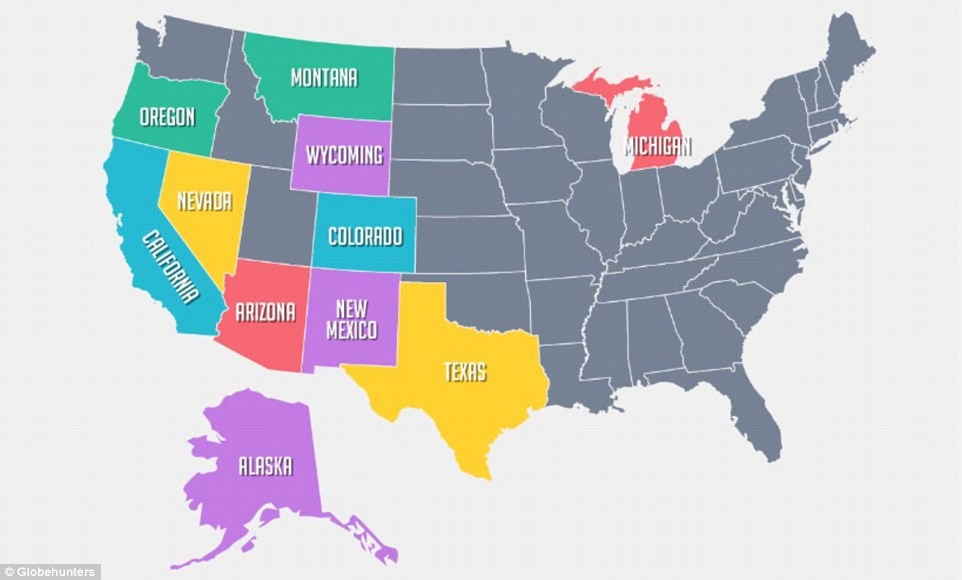
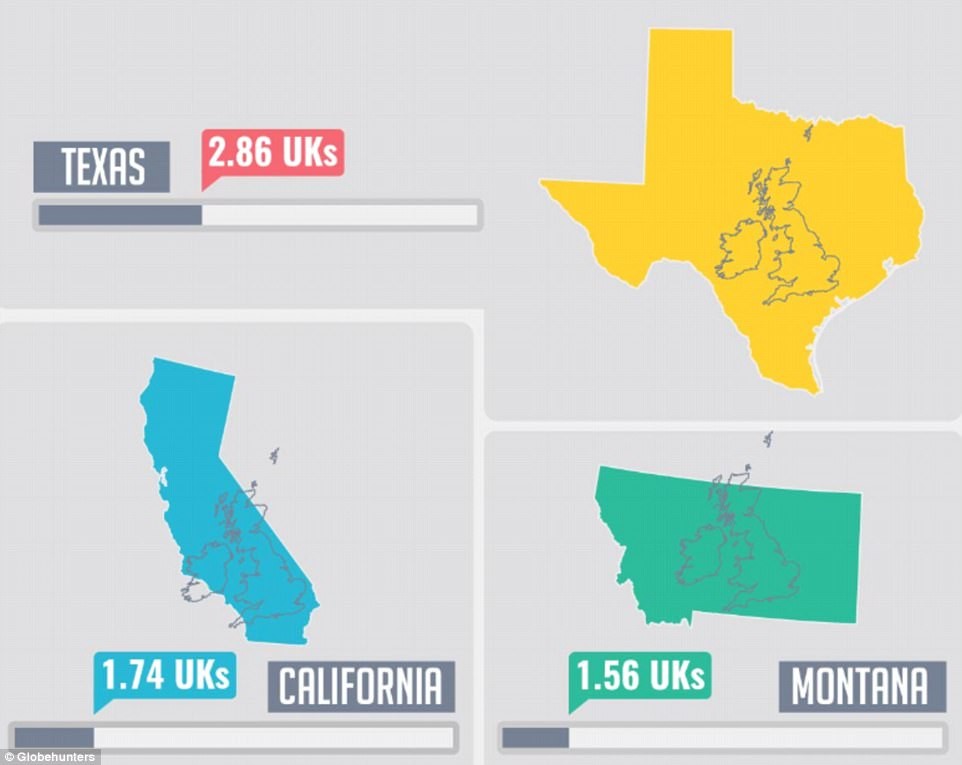
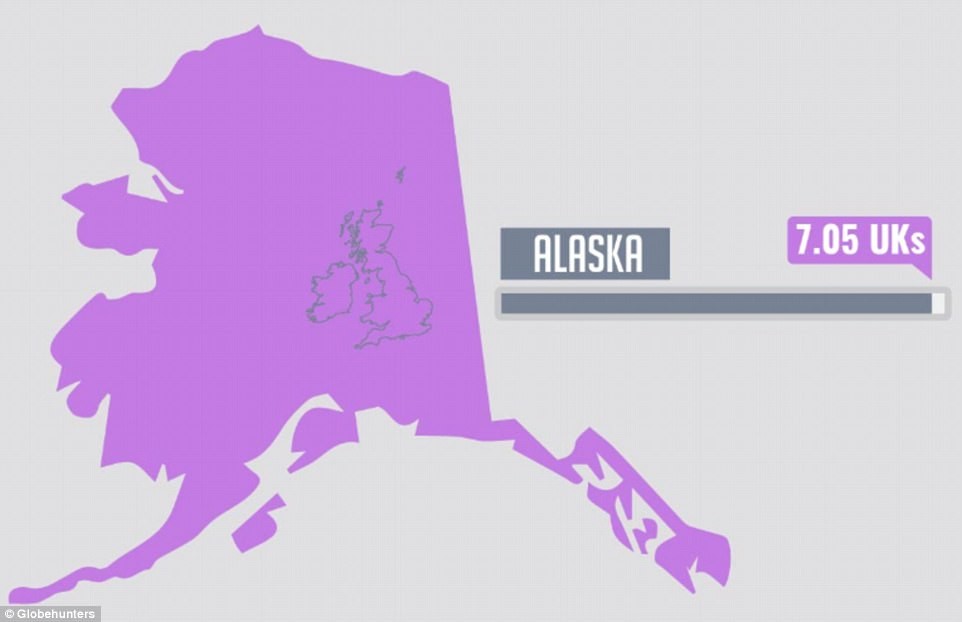
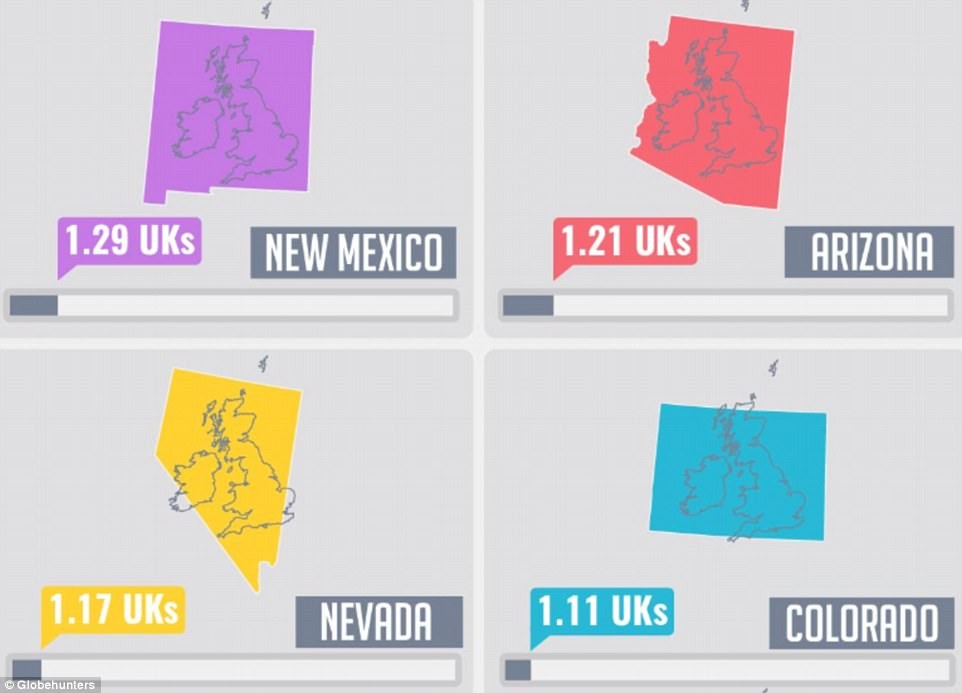
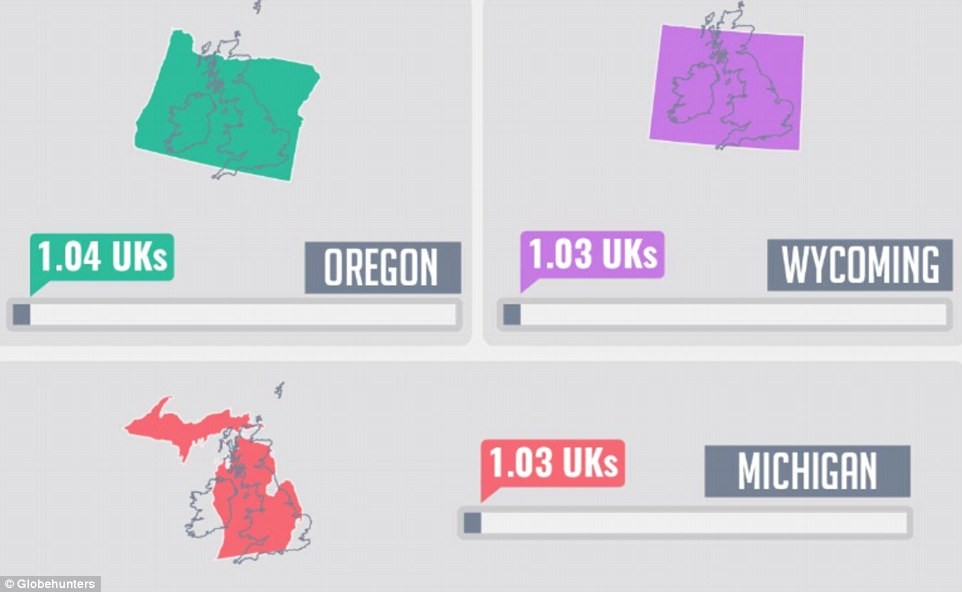
This comparison highlights the considerable difference in size between Alaska and the UK, emphasizing the vastness of Alaska’s landscape.
3. Population and Density: Impacts of Size
The stark contrast in size between Alaska and the UK has profound effects on their population distribution and density. Understanding these differences sheds light on how geographical factors influence human settlement and economic activities.
3.1 Population Overview: Alaska
Alaska is sparsely populated, with a population of approximately 733,000 people as of 2024. This results in a very low population density of about 1.3 people per square mile (0.5 people per square kilometer). The majority of Alaskans live in urban centers such as Anchorage, Fairbanks, and Juneau, while vast areas of the state remain uninhabited.
The factors contributing to Alaska’s low population density include:
- Harsh Climate: Large parts of Alaska experience extreme cold and long winters, making habitation challenging.
- Remote Location: Alaska is geographically isolated from the rest of the United States, making access and transportation difficult.
- Limited Infrastructure: The state has limited road networks and infrastructure, further restricting settlement in remote areas.
3.2 Population Overview: UK
In contrast, the United Kingdom is one of the most densely populated countries in Europe. As of 2024, the UK has a population of around 67.7 million people, resulting in a population density of about 723 people per square mile (279 people per square kilometer). The majority of the population is concentrated in urban areas such as London, Manchester, and Birmingham.
The high population density in the UK is due to:
- Favorable Climate: The UK has a temperate climate, making it conducive to agriculture and human settlement.
- Historical Development: The UK has a long history of urbanization and industrialization, leading to concentrated population centers.
- Strong Infrastructure: The UK has well-developed transportation networks, including roads, railways, and airports, facilitating movement and settlement.
3.3 Comparative Population Density: A Striking Contrast
The difference in population density between Alaska and the UK is striking:
- The UK has approximately 556 times more people per square mile than Alaska.
- Alaska’s population is less than 1.1% of the UK’s population.
This disparity affects various aspects of life, including resource management, infrastructure development, and environmental conservation. In Alaska, the challenge lies in managing vast natural resources while minimizing environmental impact. In the UK, the focus is on sustainable urban planning and managing resources in a densely populated environment.
3.4 Impacts on Infrastructure and Services
The population density significantly influences the provision of infrastructure and services:
- Alaska: Due to its low population density, providing services such as healthcare, education, and transportation is challenging and costly. Infrastructure development is often limited to urban centers, leaving remote areas underserved.
- UK: The high population density allows for efficient provision of services and infrastructure. However, it also leads to challenges such as traffic congestion, housing shortages, and environmental pollution.
3.5 Socio-Economic Implications
The population differences also have socio-economic implications:
- Alaska: The economy is heavily reliant on natural resources such as oil, gas, and fishing. The labor market is relatively small, and wages tend to be higher to attract workers to remote areas.
- UK: The economy is more diversified, with strong sectors in finance, manufacturing, and services. The labor market is competitive, and there is a greater emphasis on innovation and technology.
4. Climate and Environment: Diverse Conditions
The contrasting sizes and geographical locations of Alaska and the UK lead to significant differences in their climates and environments. These variations impact everything from wildlife habitats to economic activities and daily life.
4.1 Climate Zones in Alaska
Alaska experiences a wide range of climate zones due to its vast size and varied topography. These include:
- Arctic Climate: Found in northern Alaska, characterized by long, cold winters and short, cool summers. Temperatures can drop to -40°F (-40°C) or lower.
- Subarctic Climate: Dominates interior Alaska, with long, cold winters and short, mild summers. Temperature extremes are common.
- Maritime Climate: Prevalent in southeastern Alaska, influenced by the Pacific Ocean. This region has milder winters and cooler summers, with high precipitation.
- Transitional Climate: Found in southcentral Alaska, with characteristics of both maritime and subarctic climates.
The diverse climates support a wide range of ecosystems, from tundra and boreal forests to temperate rainforests and glaciers.
4.2 Climate Zones in the UK
The United Kingdom has a temperate maritime climate, influenced by the Atlantic Ocean. This results in relatively mild winters and cool summers, with rainfall throughout the year. Key characteristics of the UK climate include:
- Mild Temperatures: Average temperatures range from 5°C (41°F) in winter to 18°C (64°F) in summer.
- High Precipitation: The UK receives regular rainfall, with average annual precipitation ranging from 800 mm (31 inches) to over 3,000 mm (118 inches) in mountainous areas.
- Variability: The weather can be highly variable, with frequent changes in temperature and precipitation.
The UK’s climate is relatively uniform compared to Alaska, but regional variations exist, such as the wetter and cooler conditions in the Scottish Highlands and the drier conditions in southeastern England.
4.3 Environmental Differences: Alaska vs. UK
The environmental differences between Alaska and the UK are significant:
- Alaska: Dominated by vast wilderness areas, including national parks, wildlife refuges, and glaciers. The state is rich in natural resources such as oil, gas, minerals, and timber. Environmental challenges include climate change impacts, such as thawing permafrost and glacial retreat, as well as managing resource extraction sustainably.
- UK: Characterized by a mix of urban and rural landscapes, with intensive agriculture and industry. The country has a strong focus on conservation and sustainability, with efforts to protect biodiversity, reduce carbon emissions, and manage waste. Environmental challenges include air and water pollution, habitat loss, and the impacts of climate change, such as rising sea levels and extreme weather events.
4.4 Impact on Ecosystems and Wildlife
The climate and environmental differences have a direct impact on ecosystems and wildlife:
- Alaska: Supports a diverse range of wildlife, including bears, wolves, moose, caribou, whales, and salmon. The Arctic and subarctic ecosystems are particularly vulnerable to climate change, threatening the habitats of iconic species.
- UK: Home to a variety of wildlife, including birds, mammals, and fish. The country has a strong focus on biodiversity conservation, with efforts to protect habitats and species. Challenges include habitat fragmentation, invasive species, and the impacts of climate change on native wildlife.
4.5 Resource Management and Conservation
The approaches to resource management and conservation differ significantly:
- Alaska: Focuses on managing vast natural resources sustainably, balancing economic development with environmental protection. Key issues include oil and gas development, fisheries management, and protection of wilderness areas.
- UK: Emphasizes sustainable development and conservation in a densely populated environment. Key priorities include reducing carbon emissions, promoting renewable energy, protecting biodiversity, and managing waste effectively.
5. Economic Activities: Reflecting Geographical Differences
The economic activities in Alaska and the UK are significantly influenced by their respective geographical characteristics. Understanding these differences provides insight into the strengths and challenges of each region’s economy.
5.1 Economic Sectors in Alaska
Alaska’s economy is heavily reliant on natural resources. Key sectors include:
- Oil and Gas: The oil and gas industry is the largest contributor to Alaska’s economy, with significant reserves located in the North Slope region.
- Fishing: Alaska’s fisheries are among the most productive in the world, supporting a large commercial fishing industry.
- Tourism: Alaska’s stunning natural beauty and wildlife attract millions of tourists each year, contributing significantly to the economy.
- Government: The government sector is also a major employer, with federal, state, and local agencies playing a crucial role in the economy.
Other sectors include mining, timber, and transportation, all of which are closely tied to the state’s natural resources.
5.2 Economic Sectors in the UK
The UK has a diversified and highly developed economy. Key sectors include:
- Finance: London is a global financial center, and the finance sector is a major contributor to the UK economy.
- Manufacturing: The UK has a strong manufacturing sector, with industries such as aerospace, automotive, and pharmaceuticals.
- Services: The service sector is the largest part of the UK economy, including industries such as tourism, retail, and healthcare.
- Technology: The UK has a growing technology sector, with strengths in areas such as software development, biotechnology, and renewable energy.
Other sectors include agriculture, energy, and construction, all of which contribute to the UK’s diverse economic landscape.
5.3 Resource Dependency vs. Diversification
The main difference lies in the level of resource dependency:
- Alaska: Highly dependent on natural resources, making it vulnerable to fluctuations in commodity prices and environmental regulations.
- UK: More diversified, with a broader range of industries providing stability and resilience.
This difference shapes economic policies and development strategies in each region. Alaska focuses on sustainable resource management and diversification of its economy, while the UK emphasizes innovation, technology, and global competitiveness.
5.4 Trade and International Relations
The geographical differences also influence trade and international relations:
- Alaska: Plays a strategic role in U.S. relations with Asia, particularly in trade and security. Its proximity to Russia also makes it a key player in Arctic affairs.
- UK: Has a long history of international trade and diplomatic relations, with strong ties to Europe, North America, and the Commonwealth.
5.5 Challenges and Opportunities
Both Alaska and the UK face unique economic challenges and opportunities:
- Alaska: Challenges include managing resource extraction sustainably, addressing climate change impacts, and diversifying the economy. Opportunities include developing renewable energy sources, expanding tourism, and leveraging its strategic location for trade and investment.
- UK: Challenges include navigating Brexit, addressing income inequality, and promoting sustainable growth. Opportunities include investing in technology and innovation, strengthening trade ties with emerging markets, and promoting its cultural heritage.
6. Strategic Importance: Geopolitics and Location
The geographical locations of Alaska and the UK contribute significantly to their strategic importance. Understanding their respective roles in geopolitics and international relations provides valuable context for assessing their global influence.
6.1 Alaska’s Strategic Location
Alaska’s location at the northwestern edge of North America gives it unique strategic advantages:
- Proximity to Asia: Alaska is the closest U.S. state to Asia, making it a crucial link for trade, transportation, and communication.
- Arctic Access: Its position in the Arctic region gives it access to emerging shipping routes and natural resources, making it a key player in Arctic affairs.
- Military Significance: Alaska hosts several military bases, providing a strategic defense perimeter for the United States.
Alaska’s strategic importance has grown in recent years due to increasing geopolitical competition in the Arctic and the opening of new shipping lanes as a result of climate change.
6.2 The UK’s Strategic Location
The United Kingdom’s island location off the coast of Europe has historically made it a significant player in global affairs:
- Maritime Power: Its island status has made it a dominant maritime power, controlling key shipping lanes and trade routes.
- European Gateway: Its location provides a gateway to Europe, facilitating trade, travel, and cultural exchange.
- Global Influence: The UK has a long history of global influence, with strong ties to countries around the world through its colonial past and membership in international organizations.
The UK’s strategic importance is maintained through its strong military capabilities, economic influence, and diplomatic relations.
6.3 Geopolitical Roles: Alaska
Alaska plays a crucial role in U.S. geopolitics:
- Defense: Protecting U.S. territory and interests in the Arctic and Pacific regions.
- Trade: Facilitating trade with Asia and accessing Arctic resources.
- International Relations: Engaging with Arctic nations and promoting U.S. interests in the region.
Alaska’s geopolitical role is growing as the Arctic becomes more accessible and strategically important.
6.4 Geopolitical Roles: UK
The UK’s geopolitical role is multifaceted:
- European Influence: Maintaining influence in Europe despite Brexit.
- Global Trade: Promoting free trade and economic cooperation.
- Security: Contributing to global security through NATO and other alliances.
The UK’s geopolitical influence is sustained through its economic power, military capabilities, and diplomatic efforts.
6.5 Comparing Strategic Significance
The strategic significance of Alaska and the UK differs in scope and focus:
- Alaska: Primarily focused on regional security, resource management, and trade with Asia.
- UK: Broader global focus, encompassing trade, security, and diplomatic relations with countries around the world.
7. Cultural and Social Differences: A Contrast of Lifestyles
The significant geographical differences between Alaska and the UK influence their cultural and social landscapes. Understanding these contrasts provides insight into how environment shapes lifestyle, values, and traditions.
7.1 Cultural Heritage: Alaska
Alaska’s cultural heritage is deeply rooted in its indigenous cultures and frontier history:
- Indigenous Cultures: Alaska is home to numerous indigenous groups, each with unique languages, traditions, and art forms. These cultures have a profound influence on Alaskan society.
- Frontier Spirit: The state’s history as a frontier region has fostered a spirit of self-reliance, independence, and adventure.
- Outdoor Lifestyle: Alaskans value outdoor activities such as hunting, fishing, hiking, and skiing, which are integral to their way of life.
7.2 Cultural Heritage: UK
The United Kingdom has a rich and diverse cultural heritage, shaped by its long history and global connections:
- Historical Traditions: The UK has a long and influential history, with traditions ranging from royal ceremonies to literary classics.
- Multicultural Society: The UK is a multicultural society, with diverse communities and traditions from around the world.
- Urban Culture: The UK has a vibrant urban culture, with thriving arts, music, and culinary scenes.
7.3 Social Values: Alaska
Alaskan social values reflect its unique environment and history:
- Independence: A strong emphasis on self-reliance and personal freedom.
- Community: Close-knit communities, particularly in rural areas, where cooperation and mutual support are essential.
- Respect for Nature: A deep appreciation for the natural environment and a commitment to conservation.
7.4 Social Values: UK
British social values are shaped by its history, social structures, and global outlook:
- Fairness: A strong belief in fairness, equality, and social justice.
- Tolerance: A commitment to tolerance, diversity, and inclusivity.
- Civic Engagement: A tradition of civic engagement, with active participation in politics and community affairs.
7.5 Lifestyle Differences
The lifestyles in Alaska and the UK differ significantly:
- Alaska: Rural, outdoor-oriented lifestyle, with a focus on self-sufficiency and connection to nature.
- UK: Urban, fast-paced lifestyle, with access to a wide range of cultural and social amenities.
7.6 Arts and Entertainment
The arts and entertainment scenes in Alaska and the UK reflect their distinct cultural landscapes:
- Alaska: Emphasis on indigenous arts, outdoor festivals, and local music.
- UK: Thriving arts scene with world-renowned theaters, museums, and music venues.
8. Implications for Travel and Tourism
The size and geographical differences between Alaska and the UK greatly influence travel and tourism. Each destination offers unique experiences and caters to different types of travelers.
8.1 Tourism in Alaska
Alaska attracts tourists seeking adventure, natural beauty, and wildlife encounters. Key attractions include:
- National Parks: Denali National Park, Glacier Bay National Park, and Kenai Fjords National Park offer stunning landscapes and wildlife viewing opportunities.
- Cruises: Coastal cruises are popular, providing access to glaciers, fjords, and coastal communities.
- Wildlife Viewing: Opportunities to see bears, whales, moose, and other iconic species.
- Outdoor Activities: Hiking, fishing, kayaking, and skiing are popular activities.
Alaska’s tourism sector is seasonal, with the majority of visitors arriving during the summer months.
8.2 Tourism in the UK
The UK attracts tourists interested in history, culture, and urban experiences. Key attractions include:
- Historical Sites: Castles, palaces, and ancient ruins such as Stonehenge.
- Cultural Attractions: Museums, theaters, and art galleries in cities like London, Edinburgh, and Manchester.
- Scenic Landscapes: The Lake District, Scottish Highlands, and coastal regions offer beautiful scenery.
- Urban Experiences: Vibrant cities with diverse neighborhoods, shopping, and dining.
The UK’s tourism sector is year-round, with visitors arriving throughout the year.
8.3 Accessibility and Infrastructure
The accessibility and infrastructure for tourism differ significantly:
- Alaska: Access to many areas is limited due to vast distances and rugged terrain. Infrastructure is less developed, requiring more planning and preparation.
- UK: Excellent transportation infrastructure, with extensive road, rail, and air networks. Easy access to most attractions.
8.4 Travel Planning Considerations
Travelers to Alaska and the UK need to consider different factors:
- Alaska: Planning a trip to Alaska requires careful consideration of transportation, accommodation, and weather conditions. Booking tours and accommodations in advance is essential.
- UK: Travel planning is generally easier due to well-developed infrastructure. However, booking accommodations and tours in advance is still recommended, particularly during peak season.
8.5 Costs and Budgeting
The costs associated with travel also vary:
- Alaska: Generally more expensive due to remote locations and higher transportation costs.
- UK: Can be more affordable, particularly with budget travel options and accessible public transportation.
Whether you seek the untamed wilderness of Alaska or the historic charm of the UK, both destinations offer unforgettable travel experiences.
9. Future Outlook: Growth and Sustainability
The future outlook for Alaska and the UK involves addressing growth and sustainability in the face of evolving challenges and opportunities.
9.1 Alaska’s Future
Alaska faces several key challenges:
- Climate Change: Addressing the impacts of climate change, such as thawing permafrost, glacial retreat, and sea-level rise.
- Economic Diversification: Reducing reliance on oil and gas and diversifying the economy.
- Sustainable Resource Management: Managing natural resources sustainably to ensure long-term prosperity.
- Infrastructure Development: Improving infrastructure to support economic growth and improve the quality of life for Alaskans.
Opportunities for Alaska include:
- Renewable Energy: Developing renewable energy sources such as wind, hydro, and geothermal.
- Tourism Expansion: Expanding tourism sustainably to attract more visitors and generate revenue.
- Strategic Partnerships: Forming strategic partnerships with Asian countries for trade and investment.
9.2 The UK’s Future
The UK faces its own set of challenges:
- Brexit: Navigating the impacts of Brexit on trade, investment, and international relations.
- Economic Growth: Promoting sustainable economic growth and reducing income inequality.
- Climate Change: Meeting carbon emission targets and adapting to the impacts of climate change.
- Social Cohesion: Maintaining social cohesion in a diverse and multicultural society.
Opportunities for the UK include:
- Technological Innovation: Investing in technology and innovation to drive economic growth.
- Global Trade: Strengthening trade ties with countries around the world.
- Sustainable Development: Promoting sustainable development practices to protect the environment and improve quality of life.
9.3 Sustainability Goals
Both Alaska and the UK are committed to achieving sustainability goals:
- Alaska: Focus on sustainable resource management, renewable energy development, and conservation of natural resources.
- UK: Emphasis on reducing carbon emissions, promoting renewable energy, and protecting biodiversity.
9.4 Long-Term Vision
The long-term vision for Alaska and the UK involves creating resilient, sustainable, and prosperous societies that can thrive in the face of future challenges.
- Alaska: A diversified economy that leverages its natural resources sustainably, promotes renewable energy, and embraces innovation.
- UK: A thriving economy that is globally competitive, environmentally sustainable, and socially inclusive.
At COMPARE.EDU.VN, we understand the importance of making informed decisions based on comprehensive comparisons. Whether you are comparing geographical regions, economic sectors, or strategic opportunities, our platform provides the insights you need to make smart choices. Visit us at 333 Comparison Plaza, Choice City, CA 90210, United States, or contact us via WhatsApp at +1 (626) 555-9090. Learn more at COMPARE.EDU.VN.
9. FAQ about Alaska and the UK
1. How much bigger is Alaska compared to the UK?
Alaska is approximately 7.1 times larger than the UK.
2. What is the population density of Alaska versus the UK?
Alaska has a population density of about 1.3 people per square mile, while the UK has about 723 people per square mile.
3. What are the main economic sectors in Alaska?
The main economic sectors in Alaska are oil and gas, fishing, tourism, and government.
4. What are the main economic sectors in the UK?
The main economic sectors in the UK are finance, manufacturing, services, and technology.
5. How does the climate differ between Alaska and the UK?
Alaska has a range of climate zones, from Arctic to maritime, while the UK has a temperate maritime climate.
6. What are some popular tourist attractions in Alaska?
Popular tourist attractions in Alaska include Denali National Park, Glacier Bay National Park, and opportunities for wildlife viewing.
7. What are some popular tourist attractions in the UK?
Popular tourist attractions in the UK include historical sites like castles and palaces, cultural attractions in cities like London and Edinburgh, and scenic landscapes.
8. What are the main environmental challenges in Alaska?
The main environmental challenges in Alaska include climate change impacts, such as thawing permafrost and glacial retreat, and managing resource extraction sustainably.
9. What are the main environmental challenges in the UK?
The main environmental challenges in the UK include air and water pollution, habitat loss, and the impacts of climate change, such as rising sea levels and extreme weather events.
10. How does the strategic importance of Alaska compare to that of the UK?
Alaska’s strategic importance is primarily focused on regional security, resource management, and trade with Asia, while the UK has a broader global focus encompassing trade, security, and diplomatic relations with countries around the world.
Are you looking to compare other regions or make informed decisions about various aspects of life? Visit compare.edu.vn at 333 Comparison Plaza, Choice City, CA 90210, United States, or contact us via WhatsApp at +1 (626) 555-9090. Our platform provides the insights you need to make smart choices.
